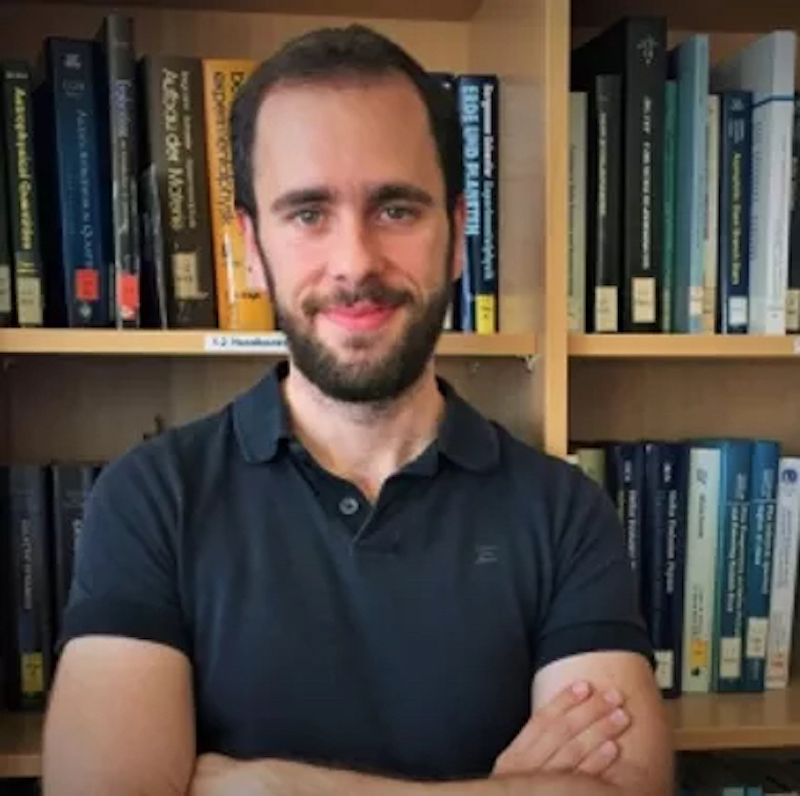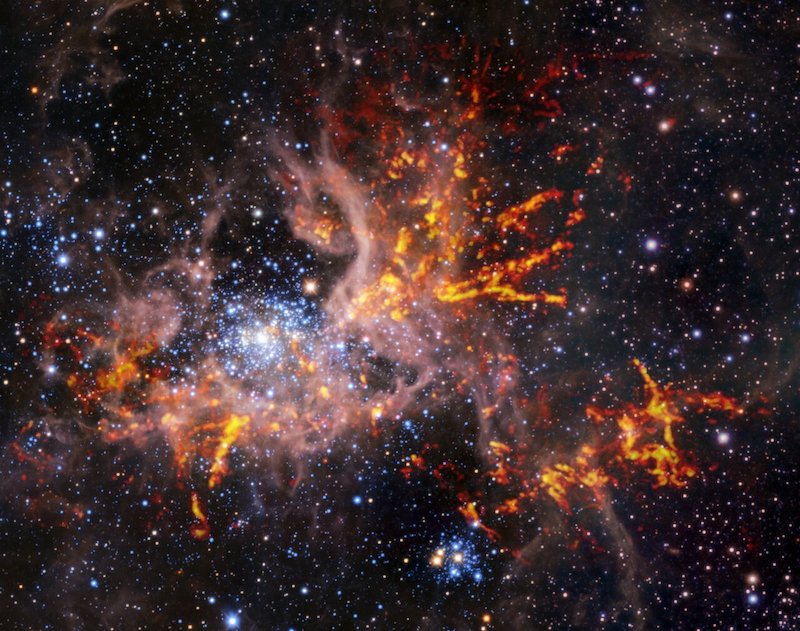
‘Black hole police’ snag their 1st discovery
Although their existence is well-documented, black holes are enigmatic. And they’re not particularly easy to find. Some reported discoveries turn out not to be black holes at all. One international group of astronomers is known for debunking black hole “discoveries.” Other astronomers have begun calling them the black hole police. But now, this group has announced its own first verified discovery. They found a stellar-mass black hole in the Tarantula Nebula, in the Large Magellanic Cloud, a small companion galaxy to our Milky Way.
The black hole, named VFTS 243, is dormant, these astronomers say. That means it doesn’t emit high levels of X-ray radiation, as many black holes do.
The team published their new peer-reviewed paper in Nature Astronomy on July 18, 2022. A free preprint version is also available from ESO.
Check this out: Milky Way black hole seen at last

Needle in a haystack
Tomer Shenar started the study at KU Leuven in Belgium. He is now at the University of Amsterdam in the Netherlands. He stated that:
We identified a “needle in a haystack”. For the first time, our team got together to report on a black hole discovery, instead of rejecting one.
The researchers discovered the black hole after searching through nearly 1,000 massive stars in the Tarantula Nebula region of the Large Magellanic Cloud. The team used six years of observations by the Fibre Large Array Multi Element Spectrograph (FLAMES) instrument on ESO’s Very Large Telescope (VLT). The researchers were looking for massive stars that might have black holes as companions. That is not an easy feat, and indeed, some astronomers reacted to the discovery with skepticism. Shenar said:
As a researcher who has debunked potential black holes in recent years, I was extremely skeptical regarding this discovery.
Co-author Kareem El-Badry of the Harvard-Smithsonian Center for Astrophysics in the USA, was also doubtful, saying:
When Tomer asked me to double check his findings, I had my doubts. But I could not find a plausible explanation for the data that did not involve a black hole.
As the paper described:
Here, we report on VFTS 243: a massive X-ray faint binary in the Large Magellanic Cloud. With an orbital period of 10.4-d, it comprises an O-type star of 25 solar masses and an unseen companion of at least nine solar masses.
The minimum companion mass implies that it is a black hole, making VFTS 243 the first unambiguously detected extra-galactic binary containing an X-ray quiet black hole.

Stellar-mass black holes
VFTS 243 is a stellar-mass black hole. It is at least nine times the mass of our sun, and orbits a hot, blue star that is 25 times the sun’s mass.
Stellar mass black holes form when a massive star dies, and collapses in on itself. There is still debate, however, as to whether there is also a supernova explosion involved. In the case of VFTS 243, there’s no evidence so far of an explosion. As Shenar noted:
The star that formed the black hole in VFTS 243 appears to have collapsed entirely, with no sign of a previous explosion. Evidence for this ‘direct-collapse’ scenario has been emerging recently, but our study arguably provides one of the most direct indications. This has enormous implications for the origin of black-hole mergers in the cosmos.
If the collapsing star is in a binary system – where two stars orbit each other – then the black hole orbits the companion star.

Dormant black holes
A dormant black hole is a black hole that does not emit any high-energy radiation. That’s because it’s not interacting with its environment, as in the case where a star is feeding matter onto a black hole. In that situation, the matter doesn’t just fall into the hole. It forms an accretion disk around the hole, and all sort of high-energy occurrences take place in the accretion disk.
A dormant black hole, on the other hand, is just sitting there, being quiet. And so these black holes are very, very hard to detect. Yet, astronomers believe, they are widespread.

‘Black hole police’ encourage scrutiny
The “black hole police” may be skeptical of new discoveries, including their own. But they do want astronomers to keep searching for additional black holes orbiting massive stars. As El-Badry summed it up:
Of course I expect others in the field to pore over our analysis carefully, and to try to cook up alternative models. It’s a very exciting project to be involved in.
Indeed, astronomers say there are probably thousands of black holes similar to VFTS 243, just waiting to be discovered. Let’s go look for them!

Bottom line: A group of scientists known as the “black hole police” have found and verified their first black hole. It is a dormant, non-active black hole orbiting a massive star in the Large Magellanic Cloud, a smaller companion galaxy to our Milky Way.











